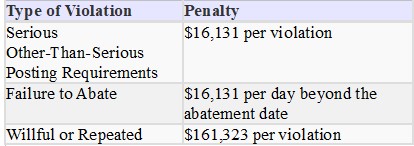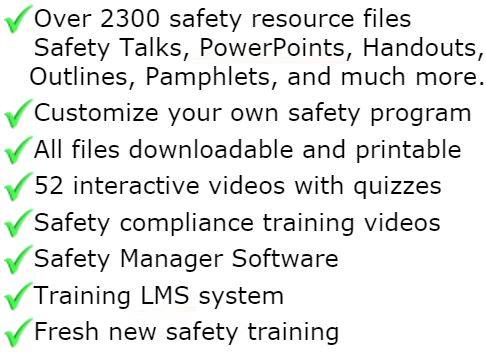
Powered Carts & Low Speed Vehicle Safety Program (Golf Carts)
Purpose
To provide administrators and supervisors with guidelines to be followed when training vehicle operators in the proper and safe driving practices for powered carts and low-speed vehicles (LSV). The powered cart & LSV maintenance program and pre-trip safety inspection provide a mechanism to ensure vehicles are maintained to minimum safety standards.
Policy
It is the policy of [COMPANY] to establish a program that provides the operators of electric or gasoline powered carts & LSV with the following:
1. Adequate training so that the vehicles may be operated in a safe manner.
2. A vehicle that is mechanically safe to operate on a university campus.
3. An understanding of the legal requirements for driving these vehicles on or off roadways
Definitions
Powered Carts are not motor vehicles and are not licensed by the DMV (they do not have a license plate) and shall not be driven on public roadways. They may be either gasoline or electric powered.
Low-Speed Vehicles (LSV) are motor vehicles which are capable of top speeds of 25 mph. They MAY BE LICENSED TO OPERATE ON public streets posted 35 mph or less that are adjacent COMPANY FACILITIES.
[CHECK STATE LAWS]
Responsibilities
SAFETY
1. Develop and administer the procedures relating to the Powered Cart & LSV Safety Program.
2. Coordinate the program with all affected campus departments.
3. Ensure departments are administering all elements of the program through periodic record audits.
4. Annually conduct the following activities:
a. Review the program for possible revisions.
b. Provide refresher information to departments that operate powered carts and LSV.
DEPARTMENTS THAT USE POWERED CARTS OR LSV
1. Ensure that all vehicle operators complete the training prior to operating a powered cart or LSV.
2. Annually review "Rules for Safe Operation of Powered Carts and LSV" with all powered cart and LSV operators.
3. Monitor the driving habits of employees.
4. Have all purchases of powered carts and LSV approved and inspected upon delivery by _ _ _ _ _ _ _ _ _ _ _ _
5. Ensure that the carts and LSV are maintained according to the Maintenance Program.
6. Immediately or within 24 hours of occurrence:
a. Report all accidents using Standard Vehicle and Accident Forms
b. Report all injuries
c. Send completed forms to _ _ _ _ _ _ _ _ _ _ _ _ _ _ _ _ _ _.
d. Accidents involving injury immediately call _ _ _ _ _ _ _ _ _ _ _ _ _ _ _ _ _ _
EMPLOYEES
1. Abide by all the rules and regulations specified in this program.
FACILITY MANAGEMENT
1. Develop and maintain a standard for powered cart and LSV safety equipment (i.e. seat belts, horn, windshield). This standard will be used when purchasing to ensure that all new carts and LSV purchased meet minimum safety standards.
2. Administer the powered cart and LSV maintenance program
Training
Prior to operating a powered cart or LSV, drivers must complete a powered cart/LSV safety training program administered by their supervisor. Note: this training is in addition to the Defensive Driving class required for all drivers of state vehicles. Complete the following sections:
1. Ensure that the driver has met the minimum requirements for operating a state vehicle:
a. Driver must have a valid STATE Drivers License.
b. Driver has completed a Defensive Driving class
2. Provide the employee with a copy of Rules for Safe Operation of Powered Carts & Low-Speed Vehicles. Ensure the employee understands all of these rules. A copy of these rules should also be posted in the workplace.
3. Review the Pre-Trip Safety Inspection requirements
4. Review the basics for operating the powered cart or LSV with the employee. Ensure that the driver knows the location and proper operation of the following:
a. Lights, turn signal, and horn location (if equipped).
b. Emergency brake location and operation.
c. Accelerator and brake pedal operation.
d. Forward-Reverse switch location and operation.
After completing the above steps, have employee sign the Employee/Supervisor Training Certification Form. A copy of this certification shall be sent to the _ _ _ _ _ _ _ _ _ _ _ _ _ Office and retained in department files as long as the employee remains an active powered cart or LSV operator.
Pre-trip Safety Inspection
Prior to driving any powered cart or LSV, the following Pre-Trip Safety Inspection shall be performed:
1. Check all tires for proper air pressure - use air pressure gauge if you are unsure.
2. Check accelerator pedal for a smooth and non-binding motion.
3. Check all lights (if equipped).
4. Test brakes for proper operation.
5. Ensure seatbelts are in good working condition.
6. Check mirrors.
If any of the tested items are not functioning properly, immediately take the cart or LSV out of service until repairs are completed.
Maintenance Program
All powered carts and LSV must undergo an annual safety inspection conducted by the PPM Auto Shop. A written summary of the inspection results will be given to the department for their records.
If a department chooses to use an outside vendor to perform the inspection, the vendor will (as a minimum) follow the same inspection protocol as that followed by PPM. PPM will supply a copy of this protocol upon

GET INSTANT ACCESS
to THE MEMBERS LIBRARY
Safety materials created by safety professionals.
Access to the Safety Manager software.
Wide variety of safety videos and courses.
**Brand New** Safety Training Management System
Pre-Made Safety Materials Ready For Use
Created by experienced safety professionals & risk consultants. Saving you time, money, and risk of injuries.
95% of the work already done.
Below are the maximum penalty amounts, with the annual adjustment for inflation, that may be assessed after Jan. 15, 2024. (See OSHA Memo, Jan. 8, 2024).

**New OSHA HEAT 90 DAY**
>>Download Free HERE<<
**New 2024 OSHA 300 Form**
>>Download Free HERE<<
**Brand New**
Free with full membership subscription
Training LMS System
Ask The Safety Consultant
Safety Equipment Deal Finder

“SafetyInfo.com is the first go-to website for safety professionals and companies to use in establishing a solid safety program"
-Mike McKenzie, Certified Safety & Health Manager (CSHM), McSafety Solutions™
Note: You must have a full subscription to the Safety Library in order to use this material. Any use outside of your organization, for resell, or without an active membership is strictly prohibited and may result in prosecution under copyright infringement laws. Please contact us first, if you would be interested in reselling or using our materials for reproduction.
Inside the Members Library
Topic Index
Accident Prevention
Air Quality
Asbestos
Bloodborne Pathogens
Boilers
Chemical Safety
Compressed Gas
Confined Space
Construction
Construction Worksite
Cranes & Slings
Driver / Fleet Safety
Drug Free Workplace
Electrical
Emergency Management
Engineering Safety
Environmental
Equipment
Ergonomics
Fall Protection
Fire Safety & Prevention
First Aid
Flammable Materials
Forklifts
Hazard Communication
Hazardous Materials
Hearing Protection
Heat Stress
Hot Work
Housekeeping
Job Safety Analysis
Laboratory
Ladders
Lead
Lockout-Tagout
Machinery & Equipment
Material Handling
MSDS (SDS)
Medical & First Aid
Occupational Health
Office Safety
Off the Job Safety
Personal Protection
Process Safety
Record Keeping
Respiratory Protection
Silica Safety
Rules & Policies
Signs & Labels
Slips, Trips & Fall
Training
Terrorism Programs
Tool Safety
Vehicle & Driver
Violence Programs
Welding & Hot Work
Training Videos
Library Index
Training Materials
Videos/Courses
Talks
Articles
PowerPoint
Handouts
Training Overheads
Quizzes
Supervisor Briefs
Management Briefs
Safety Sessions
2 Minute OSHA Safety Talks
Pamphlets
First Aid Training
Supervisor Training
Hazardous Materials
Bomb Threat
Crossword Puzzles
Biological Agents
Forms & Documents
Forms
Checklists
Audit Guides
Inspections Guides
Signs & Labels
Environmental Audit Guides
Recordkeeping - OSHA 300
Sign & Label Maker
Safety Management Resources
Safety Manuals/Written Programs
Ergonomic Programs
Emergency Plans
Process Safety Management
Construction Safety
Occupational Health
Environmental
Topic Sheets
DOT Fleet-Driver
Hazardous Materials
Chemical Safety
Drug Free Workplace
Terrorism Programs
Development Guides
Safety Manager Software
Safety References & Graphics
Technical Safety Information
Posters
Topic & Fact Sheets
Development Information
Job Specific Safety Rules
Terrorism
Calculators
Safety Comic Strips
New Safety Training System
Schedule and train your employees with our materials. Add unlimited amount of employees. Record all progress and issue certificates. For group and individual training sessions.

